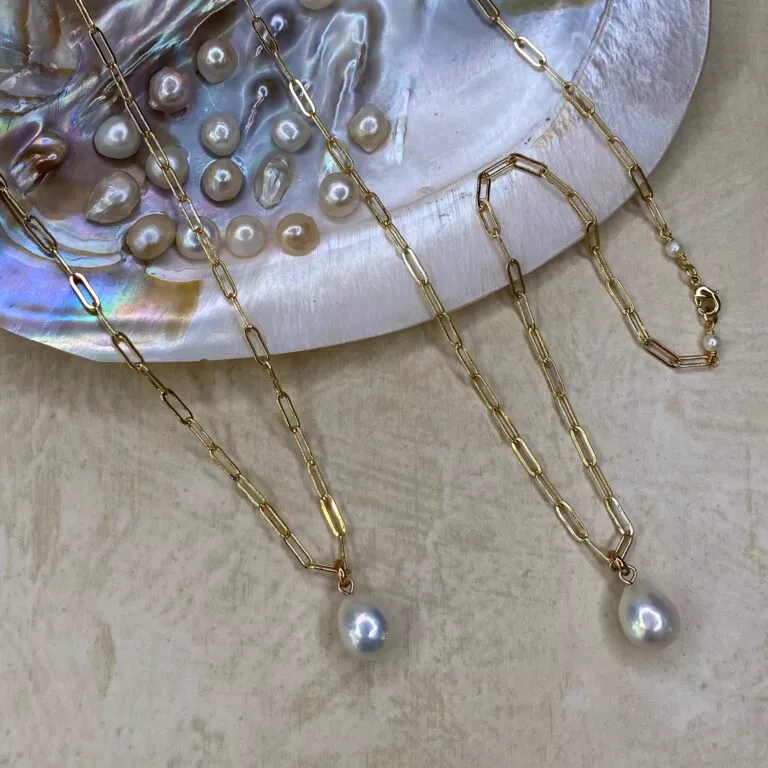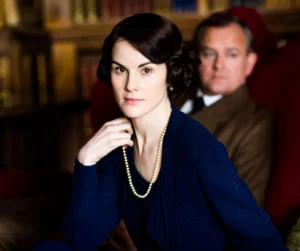

Have you ever wondered about the history of pearls and where they originate from? Read on to find out more about the story of the pearl, its historical presence and the emergence of pearl jewellery – the journey of this precious gem is quite fascinating!
The Story Behind the Pearl
Pearls are officially the world’s oldest gem. It is not exactly known when they were first discovered, but it is believed they were found by people searching for food along the seashore. They have long been known as the ‘Queen of Gems’, possessing a history and allure that is far beyond what wearers would recognise today.
Throughout much of recorded history pearls were a treasure of almost incomparable value. Pearls were presented as gifts to Chinese royalty as early as 2300BC. According to legend, Cleopatra crushed a pearl into a glass of wine to prove to Marc Anthony that she could host the most expensive and lavish dinner in history. Pearls have such a long and ancient history that it is no surprise that over time, the pearl has become shrouded by myths and legends.

The Persian Gulf carried an abundance of natural oyster beds which meant that pearls had a great importance in Arab cultures. Legend stated that pearls were formed from dewdrops that were swallowed by oysters when they fell into the sea. Before cultured pearls, the Persian Gulf was the centre of the pearl trade and it was a source of wealth in the region way before the discovery of oil.
The History of Pearl Jewellery
We know that pearl jewellery dates back to 420BC thanks to a fragment of pearl jewellery found in the sarcophagus of a Persian princess, which is now on display at the Louvre in Paris. In ancient Rome, pearl jewellery emerged as the ultimate status symbol.
The gems were seen as so precious that in the 1st century BC, Julius Caesar passed a law limiting the wearing of pearls only to the ruling classes. In ancient China, pearl jewellery symbolised the purity of the person wearing it and in the Middle Ages knights often wore pearls on the battlefield believing the precious gems would keep them safe.

Since Roman times pearls have been an important trade commodity – the discovery of pearls in Central and South America in the 15th and 16th century lead to the so-called Pearl Age. There was an escalating demand for pearls in Western Europe, where ladies of royalty and nobility wore elaborate pearl necklaces, bracelets, earrings and pearl brooches. Pearls were popular with both men and women as far back as the 17th century. By the 19th century the demand for pearl jewellery was so high that oyster supplies started to seriously decline.
Unlike a gem that is mined from the earth, a pearl is from a living organism – their very existence is actually a freak of nature and pretty spectacular! Until the start of the 20th century, the only way of collecting pearls was through divers risking their lives at depths of up to 100ft to retrieve the pearl oysters. It was a dangerous task and had limited chances of being successful as sometimes a ton of oysters would only contain three or four quality pearls. Freshwater molluscs in rivers and streams were easier to gather, but these pearl beds were often reserved for harvesting only by royalty.

It wasn’t until Kokichi Mikimoto, the son of a Japanese noodle maker, discovered how to create pearls in 1893 that the gem became widely more accessible. An irritant was manually introduced into an oyster to stimulate it to form a pearl. The introduction of cultured pearls in the early 1900’s flipped the whole pearl industry on its head and caused the value of the pearl to significantly drop.
By 1935, there were 350 pearl farms in Japan, producing 10 million cultured pearls a year. Mikimoto had to constantly defend himself against accusations that the pearls were not ‘real pearls’. However, scientists stated the contrary, that cultivated pearls had the exact same properties as those formed in deep sea beds, with the only difference being that they had a helping hand at getting the natural process started.

In early modern history pearls continued to be a status symbol. Coco Chanel in her 1936 iconic portrait is featured with multiple strands of pearls draped over her shoulders – the brand exuding luxury. When Audrey Hepburn played Holly Golightly in ‘Breakfast at Tiffany’s’ in 1961, her portrayal of a wealthy socialite included a black Givenchy gown, opera gloves and four strands of pearls connected by a decadent pendant.
Coming up to more recent years, the recent revamp of the popular series Sex and The City, ‘And Just Like That’ has seen the main character Carrie frequently accessorise her outfits with pearls. Pearl jewellery has certainly made its secure presence as the enviable choice of gem for the fashion world, up to the present day you will see the pearl incorporated into both classic and modern looks.

Today, natural pearls are amongst the rarest of gems and their scarce supply means that they are only very infrequently found in the seas off Bahrain and Australia. The shortage of natural pearls is reflected in the prices that they fetch at auction – antique pearl necklaces and earrings sell for record-breaking sums.
Unlike the shatterproof diamond, the forming of natural pearls is dependent on clean seas and stable temperatures, both of which are highly affected by our current pollution and global warming problem. Almost all pearl jewellery on the market today is made using pearls that have been cultured and farmed.
To check out our extensive range of timeless pearl jewellery, visit our shop here




